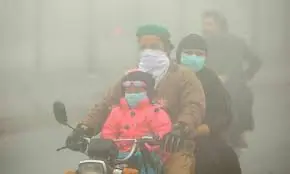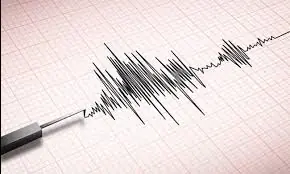Sindh cities brace for another round of urban flooding ahead of fresh rain spell
ISLAMABAD: The new rain spell entering Sindh on Thursday (tomorrow) might further increase the chances of urban flooding in different cities, the Met Office director said.
“There are further chances of urban flooding in different cities of Sindh and Balochistan,” Zaheer Uddin, the Pakistan Meteorological Department director, told Aaj News on Wednesday.
The new weather spell in Sindh and Balochistan would continue till Sunday, the Met Office said in its earlier forecast.
Many areas in Karachi, the economic hub of Pakistan, were cut off from each other because of being inundated with rainwater in the wake of heavy downpours on Monday. At least three people were electrocuted in Karachi.
“The new weather system will lead to rain and thunderstorm in many areas of Balochistan and Sindh,” Zaheer said, adding that rainfall might intensify in South Punjab in the coming days.
The forecast was that thunderstorms and rain would fall in central and upper Punjab, he added.
What is urban flooding?
The definition of urban flooding is different for different areas as the impact of the amount of rain in the shortest time in Karachi is different from the impact in Islamabad, weatherman Sardar Sarfraz told Aaj News. It depends on the area’s water drainage system.
Like, Islamabad in the past received 100mm (25 millimetres is equal to one inch) of rain in half an hour that was drained out easily.
Standing water due to rain is not drained out in a specific time because of poor infrastructure
Sarfraz said that around 623mm of rain fell in Islamabad in eight hours in July 2001 and there was no water on the streets. To a query, he agreed that a city’s infrastructure was important in dealing with such situations. But, he added that weather patterns, climate change, and extreme weather changes have also contributed to urban flooding.
Record rainfall in Karachi airport area
- 429.36mm in July 1967
- 366.8mm in August 2020
- 315.7mm in September 1959
There are three standard observatories in Karachi for measuring rain: one in old city areas and the other two in Pakistan Air Force bases.
Minor drowned in Rawalpindi’s Nullah Lai
A three-year-old child drowned in Rawalpindi’s Nullah Lai on Wednesday when a wall of the house, which is near the watercourse fell, rescue officials said.
The incident took place in Dhok Saidan Ghaziabad of the cantonment, leading to protests in many areas. Locals themselves took out the body near the Ahmedabad Stop before the arrival of the Rescue 1122 team.
Though the administration has cleared the streets of the rainwater, some of the low-lying areas are still inundated. Rain water entered houses in areas of Adiala, Lalazar Kamalabad, Dhok Jumma, Dhok Kalakhan, Sadiqabad, Shakrial, and Chaklala.
The water level increased to 13 feet in Nullah Lai at Katarian that later fell to seven feet after a fresh spell of torrential rain hit the city on Tuesday. Moreover, the water level in Gawalmandi increased to 12 feet.
Staff members and machinery were present on the field for rainwater drainage, the Water and Sanitation Agency official said.
Rain in Islamabad areas
| Area | Rainfall(mm) |
|---|---|
| A/P 140 | 140 |
| Saidpur | 71 |
| Bokra | 59 |
| Golra | 44 |
| Zeo Point | 41 |
Rain in Rawalpindi areas
| Area | Rainfall(mm) |
|---|---|
| Chaklala | 87 |
| Shamsabad | 53 |
‘Stay alert’
Prime Minister Shehbaz Sharif directed all the departments to remain alert. “No effort should be spared for the service of the people,” he said and lauded the NDMA for assisting the federal and provincial governments during monsoon.
In the wake of the PMD update, the National Disaster Management Authority directed the provincial and federal departments to stay vigilant.
The NDMA has directed all departments to ensure pre-placement of emergency equipment including de-watering pumps and availability of emergency personnel to respond to any emergency, especially in case of any blockage, road closure and damage.
“Ensure timely evacuation of the population from low-lying and flood-prone areas as per evacuation plans and make certain availability of shelter, food and medicines in relief camps,” it added.
It also directed the provincial authorities to instruct law enforcement agencies along with traffic police to guide travellers and tourists regarding likely situations and dangers of waterlogged areas and underpasses and avoid unnecessary travel and movement.
For the latest news, follow us on Twitter @Aaj_Urdu. We are also on Facebook, Instagram and YouTube.





















Comments are closed on this story.